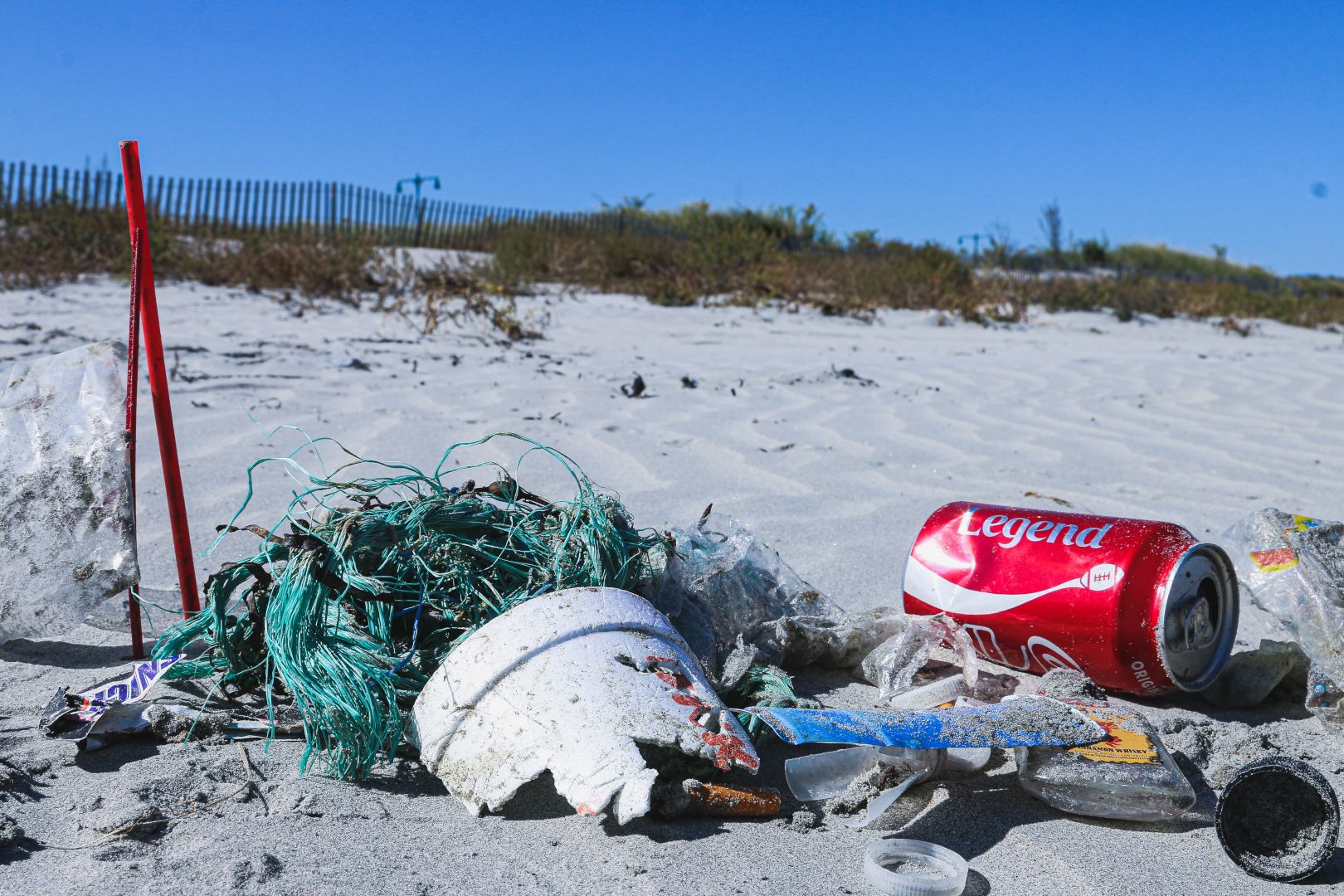
by DGR News Service | May 13, 2021 | Biodiversity & Habitat Destruction, Strategy & Analysis, The Problem: Civilization, Toxification
The aquatic food web has been seriously compromised by chemical pollution and climate change.
This article originally appeared on Climate and Capitalism
A report released today by the International Pollutants Elimination Network (IPEN) and the National Toxics Network (NTN) says that rising levels of chemical and plastic pollution are major contributors to declines in the world’s fish populations and other aquatic organisms.
Dr. Matt Landos, co-author of the report, says that many people erroneously believe that fish declines are caused only by overfishing. “In fact, the entire aquatic food web has been seriously compromised, with fewer and fewer fish at the top, losses of invertebrates in the sediments and water column, less healthy marine algae, coral, and other habitats, as well as a proliferation of bacteria and toxic algal blooms. Chemical pollution, along with climate change itself a pollution consequence, are the chief reasons for these losses.”
Aquatic Pollutants in Oceans and Fisheries documents the numerous ways in which chemicals compromise reproduction, development, and immune systems among aquatic and marine organisms. It warns that the impacts scientists have identified are only likely to grow in the coming years and will be exacerbated by a changing climate.
As co-author Dr. Mariann Lloyd-Smith points out, the production and use of chemicals have grown exponentially over the past couple of decades. “Many chemicals persist in the environment, making environments more toxic over time. If we do not address this problem, we will face permanent damage to the marine and aquatic environments that have nourished humans and every other life form since the beginning of time.”
The report identifies six key findings:
- Overfishing is not the sole cause of fishery declines. Poorly managed fisheries and catchments have wrought destruction on water quality and critical nursery habitat as well as the reduction and removal of aquatic food resources. Exposures to environmental pollutants are adversely impacting fertility, behavior, and resilience, and negatively influencing the recruitment and survival capacity of aquatic species. There will never be sustainable fisheries until all factors contributing to fishery declines are addressed.
- Chemical pollutants have been impacting oceanic and aquatic food webs for decades and the impacts are worsening. The scientific literature documents man-made pollution in aquatic ecosystems since the 1970s. Estimates indicate up to 80% of marine chemical pollution originates on land and the situation is worsening. Point source management of pollutants has failed to protect aquatic ecosystems from diffuse sources everywhere. Aquaculture is also reaching limits due to pollutant impacts with intensification already driving deterioration in some areas, and contaminants in aquaculture feeds affecting fish health.
- Pollutants including industrial chemicals, pesticides, pharmaceuticals, heavy metals, plastics and microplastics have deleterious impacts to aquatic ecosystems at all trophic levels from plankton to whales. Endocrine disrupting chemicals, which are biologically active at extremely low concentrations, pose a particular long-term threat to fisheries. Persistent pollutants such as mercury, brominated compounds, and plastics biomagnify in the aquatic food web and ultimately reach humans.
- Aquatic ecosystems that sustain fisheries are undergoing fundamental shifts as a result of climate change. Oceans are warming and becoming more acidic with increasing carbon dioxide deposition. Melting sea ice, glaciers and permafrost are increasing sea levels and altering ocean currents, salinity and oxygen levels. Increases in both de-oxygenated ‘dead zones’ and coastal algal blooms are being observed. Furthermore, climate change is re-mobilizing historical contaminants from their ‘polar sinks.’
- Climate change and chronic exposures to pesticides all can amplify the impacts of pollution by increasing exposures, toxicity and bioaccumulation of pollutants in the food web. Methyl mercury and PCBs are among the most prevalent and toxic contaminants in the marine food web.
- We are at the precipice of disaster, but have an opportunity for recovery. Progress requires fundamental shifts in industry, economy and governance, the cessation of deep-sea mining and other destructive industries, and environmentally sound chemical management, and true circular economies. Re-generative approaches to agriculture and aquaculture are urgently required to lower carbon, stop further pollution, and begin the restoration process.
![“May the truth be your armor” [Excerpts from Bright Green Lies]](https://dgrnewsservice.org/wp-content/uploads/sites/18/2021/05/BGL.jpeg)
by DGR News Service | May 11, 2021 | Biodiversity & Habitat Destruction, Climate Change, Education, Listening to the Land, Mining & Drilling, Strategy & Analysis, The Problem: Civilization, Toxification
This prologue is the first of a series of excerpts we will publish from the new book Bright Green Lies.
PROLOGUE
By Lierre Keith
We are in peril. Like all animals, we need a home: a blanket of air, a cradle of soil, and a vast assemblage of creatures who make both. We can’t create oxygen, but others can–from tiny plankton to towering redwoods. We can’t build soil, but the slow circling of bacteria, bison, and sweetgrass do.
But all of these beings are bleeding out, species by species, like Noah and the Ark in reverse, while the carbon swells and the fires burn on. Five decades of environmental activism haven’t stopped this. We haven’t even slowed it. In those same five decades, humans have killed 60 percent of the earth’s animals. And that’s but one wretched number among so many others.
That’s the horror that brings readers to a book like this, with whatever mixture of hope and despair. But we don’t have good news for you. To state it bluntly, something has gone terribly wrong with the environmental movement.
Once, we were the people who defended wild creatures and wild places. We loved our kin, we loved our home, and we fought for our beloved. Collectively, we formed a movement to protect our planet. Along the way, many of us searched for the reasons. Why were humans doing this? What could possibly compel the wanton sadism laying waste to the world? Was it our nature or were only some humans culpable? That analysis is crucial, of course. Without a proper diagnosis, correct treatment is impossible. This book lays out the best answers that we, the authors, have found. We wrote this book because something has happened to our movement. The beings and biomes who were once at the center of our concern have been disappeared. In their place now stands the very system that is destroying them. The goal has been transformed:
We’re supposed to save our way of life, not fight for the living planet; instead, we are to rally behind the “machines making machines making machines” that are devouring what’s left of our home.
Committed activists have brought the emergency of climate change into broad consciousness, and that’s a huge win as the glaciers melt and the tundra burns. But they are solving for the wrong variable. Our way of life doesn’t need to be saved. The planet needs to be saved from our way of life.
There’s a name for members of this rising movement: bright green environmentalists. They believe that technology and design can render industrial civilization sustainable. The mechanism to drive the creation of these new technologies is consumerism. Thus, bright greens “treat consumerism as a salient green practice.”1
Indeed, they “embrace consumerism” as the path to prosperity for all.2 Of course, whatever prosperity we might achieve by consuming is strictly time limited, what with the planet being finite. But the only way to build the bright green narrative is to erase every awareness of the creatures and communities being consumed. They simply don’t matter. What matters is technology. Accept technology as our savior, the bright greens promise, and our current way of life is possible for everyone and forever. With the excised species gone from consciousness, the only problem left for the bright greens to solve is how to power the shiny, new machines.
It doesn’t matter how the magic trick was done. Even the critically endangered have been struck from regard. Now you see them, now you don’t: from the Florida yew (whose home is a single 15-mile stretch, now under threat from biomass production) to the Scottish wildcat (who number a grim 35, all at risk from a proposed wind installation). As if humans can somehow survive on a planet that’s been flayed of its species and bled out to a dead rock. Once we fought for the living. Now we are told to fight for their deaths, as the wind turbines come for the mountains and solar panels conquer the deserts.
“May the truth be your armor” urged Marcus Aurelius. The truths in this book are hard, but you will need them to defend your beloved. The first truth is that our current way of life requires industrial levels of energy. That’s what it takes to fuel the wholesale conversion of living communities into dead commodities. That conversion is the problem “if,” to borrow from Australian anti-nuclear advocate Dr. Helen Caldicott, “you love this planet.” The task before us is not how to continue to fuel that conversion. It’s how to stop it.
The second truth is that fossil fuel–especially oil–is functionally irreplaceable. The proposed alternatives–like solar, wind, hydro, and biomass–will never scale up to power an industrial economy.
Third, those technologies are in their own right assaults against the living world. From beginning to end, they require industrial-scale devastation: open-pit mining, deforestation, soil toxification that’s permanent on anything but a geologic timescale, the extirpation and extinction of vulnerable species, and, oh yes, fossil fuels. These technologies will not save the earth. They will only hasten its demise.
And finally, there are real solutions. Simply put, we have to stop destroying the planet and let natural life come back. There are people everywhere doing exactly that, and nature is responding, some times miraculously. The wounded are healed, the missing reappear, and the exiled return. It’s not too late.
I’m sitting in my meadow, looking for hope. Swathes of purple needlegrass, silent and steady, are swelling with seeds–66 million years of evolution preparing for one more. All I had to do was let the grasses grow back, and a cascade of life followed. The tall grass made a home for rabbits. The rabbits brought the foxes. And now the cry of a fledgling hawk pierces the sky, wild and urgent. I know this cry, and yet I don’t. Me, but not me. The love and the aching distance. What I am sure of is that life wants to live. The hawk’s parents will feed her, teach her, and let her go. She will take her turn–then her children, theirs.
Every stranger who comes here says the same thing: “I’ve never seen so many dragonflies.” They say it in wonder, almost in awe, and always in delight. And there, too, is my hope. Despite everything, people still love this planet and all our kin. They can’t stop themselves. That love is a part of us, as surely as our blood and bones.
Somewhere close by there are mountain lions. I’ve heard a female calling for a mate, her need fierce and absolute. Here, in the last, final scraps of wilderness, life keeps trying. How can I do less?
There’s no time for despair. The mountain lions and the dragonflies, the fledgling hawks and the needlegrass seeds all need us now. We have to take back our movement and defend our beloved. How can we do less? And with all of life on our side, how can we lose?
1. Julie Newman, Green Ethics and Philosophy: An A-to-Z Guide (Thousand Oaks, CA: SAGE Publications, 2011), p. 40.
2. Ibid, p. 39
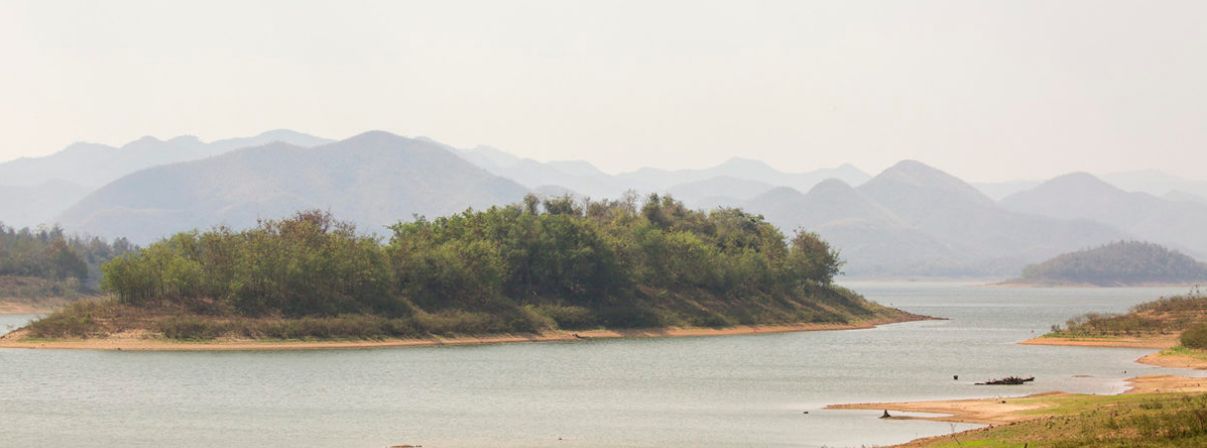
by DGR News Service | May 10, 2021 | Indigenous Autonomy, Listening to the Land, Noncooperation, Repression at Home
In this article, originally published on Mongabay, Pirawan Wongnithisathaporn and Thomas Worsdell describe how the indigenous peoples of Thailand, like many across the world, find themselves navigating global climate agendas and national environmental laws that position human rights as antagonistic to achieving biodiversity targets. This misguided notion has resulted in conflicting and outdated forestry laws and an increasingly securitized conservation strategy, which are jeopardizing the possibility of creating solutions that benefit the climate as well as people.
by Pirawan Wongnithisathaporn and Thomas Worsdell
- Thailand’s legal frameworks for biodiversity conservation and international climate commitments omit the important role that its Indigenous Peoples play as stewards of the environment.
- A militarized conservation approach has seen Indigenous communities evicted from their ancestral lands, prosecuted for enacting traditional practices, and even assaulted and killed.
- At the heart of the problem is lack of legal recognition of Indigenous groups, and therefore a refusal to grant them tenure rights.
- This article is a commentary and the views expressed are those of the author, not necessarily Mongabay.
On Sept. 3, 2019, the remains of Porlajee “Billy” Rakchongcharoen, a Karen environmental and community rights defender who was disappeared in 2014, were found in an oil drum submerged under the Kaeng Krachan dam suspension bridge in Phetchaburi, Thailand. Billy was last seen by his community while being arrested by Kaeng Krachan National Park superintendent Chaiwat Limlikit-aksorn and his officers for allegedly collecting wild honey illegally.
Three years before Billy’s disappearance, under the same superintendent’s watch, 98 houses and rice barns were burned in the village of Baan Jai Phaen Din, also in Kaeng Krachan National Park. Charges filed by the community against the former superintendent and the officers were controversially dropped in early 2020. In the meantime, Thai authorities continue to claim the settlement is illegal.
Established in 1981, Kaeng Krachan National Park sits on Thailand’s central border with Myanmar. Before being evicted by the military in 1996, the Karen Indigenous Peoples lived sustainably for centuries inside the park in their original village of Baan Jai Paen Din, meaning “land of our heart.” Ever since the eviction, they have been systematically resettled into the lowlands.
Recently, Karen members began returning to Baan Jai Paen Din in the uplands. As a result, they once again face renewed threats of eviction from the military and the country’s conservation authorities. The ongoing conflict in Kaeng Krachan is perhaps Thailand’s most well-known conflict between Indigenous Peoples and conservation activities — but it’s far from the only one. The Kaeng Krachan conflict is a clear example of deeper issues embedded in Thailand’s legislative system.
The Indigenous Peoples of Thailand, like many across the world, find themselves navigating global climate agendas and national environmental laws that position human rights as antagonistic to achieving biodiversity targets. This misguided notion has resulted in conflicting and outdated forestry laws and an increasingly securitized conservation strategy, which are jeopardizing the possibility of creating solutions that benefit the climate as well as people.
In Thailand, as in other countries, the moral imperative of preserving Earth systems is being used as an avenue for continued rights abuses against already vulnerable and marginalized communities. Rather than recognize the rights of those who have traditionally managed lands, Thai environmental policy favors centralized approaches to conserving “strategic” resources. As biodiversity becomes increasingly scarce, combating biodiversity loss through increasingly militarized means seems to be less about conserving species populations and more about ensuring territorial control. The implications of these militarized approaches are militarized outcomes, conflict, abuse, displacement, disappearances and violence.
Indigenous relationship with land
Justifying the displacement of Indigenous Peoples from biodiverse areas for the purpose of conservation is a contradiction. Indigenous Peoples inhabit some of the most biodiverse and intact landscapes on Earth, and their knowledge and associated ways of life are widely recognized as being vital for conserving biodiversity. The acknowledgement of Indigenous knowledge is enshrined within the U.N. Convention on Biological Diversity. In national contexts, acknowledgement rarely translates to strategies that actually democratize decision-making or devolve leadership to Indigenous knowledge holders. Moreover, this knowledge cannot be treated the same as other knowledge systems. While Indigenous knowledge can be documented and shared, its conservation benefits are inextricably linked to the spaces in which it is enacted. Therefore, the displacement of communities leads to the assimilation of Indigenous ways of life into the wider realms of society, which ultimately results in a breakdown of their knowledge systems.
Highland Indigenous Peoples cannot simply relocate their culture and way of life to the different demands of a valley. When this happens, the loss of knowledge and identity central to locally applied environmental solutions become stories fondly shared by elders rather than strategies collectively enacted by communities to survive in their local environments. This is what the Indigenous Peoples in Thailand are fighting for: the right to continue their way of life in the “land[s] of their heart” that have supported them through generations.
Sadly, Thai laws and government conservation strategies have failed to recognize these relationships Indigenous Peoples have with their land, a relationship built on the notion that the nature being conserved and the Indigenous Peoples who live within it are both the community. This is, in part, the basis of many conflicts between Indigenous Peoples and their governing institutions across the world. What separates the plight of Indigenous Peoples in one country from another are the different national legislative mechanisms and political will (or lack thereof) to apply or redefine laws which recognize identities and promote the agency and self-determination of community-driven solutions.
Understanding Thai environmental laws
A country’s laws are intertwined with its history, and for Thailand these laws are embedded in its process of nation building. First, we must recognize that Thailand was never physically colonized by European states. However, due to close business ties with neighboring colonial governments, it adopted many similar land management and natural resource governance regimes.
Nation building also entailed building a Thai identity that was linked to the country’s dominant language and ethnicity, Buddhism, and the monarch. As a result, for most of Thailand’s history, its Indigenous Peoples have long been regarded as non-Thai, even outsiders or illegal migrants. This view has contributed to their systemic exclusion from Thai society all together. Last year, there were about 480,000 registered stateless people in Thailand, most of whom are Indigenous Peoples living in mountainous border areas. About 77,000 Indigenous elders in Thailand lack citizenship.
In the case of Baan Jai Phaen Din, park officials claim Indigenous Peoples to be migrants from Myanmar. This is a tactic used to justify their resettlement to the wider public. This view of Indigenous Peoples as outsiders by mainstream Thai society and within national laws has been a consistent struggle for the Thai Indigenous movement, despite data from a military Ordinance Survey Department showing that the Karen have lived in Baan Jai Phaen Din for more than 100 years.
In 1997, under the late King Rama IX, the hill tribes gained their current definition of Chao Thai Phu Khao (“Thai people who live in the Mountain”) from the government. While this definition finally recognized Indigenous Peoples as “Thai people,” it is a label that fails to acknowledge them as “Indigenous Peoples” in line with definitions in the U.N. Declaration on the Rights of Indigenous Peoples (UNDRIP). As a result, Thailand has still not fully recognized the Indigenous identities (Indigeneity) of the peoples who live within its borders. This lack of recognition or a selective understanding of what it means to be Indigenous is a common challenge across Asia as well as Africa.
Indigenous Peoples are associated with having “historical continuity with pre-colonial and/or pre-settler societies” and a “strong link to territories and natural resources.” Using only this part of the definition, it is easy to see how governments in Asia and Africa argue that all of its citizens are Indigenous and equally protected to rights under a country’s constitution. But Indigeneity is a complex construction, linked also to languages, cultural manifestations, ancestral lands, the desire to uphold traditional ways of life, and a collective self-identification as Indigenous. Indigeneity is linked to a different set of relations with the surrounding world, with the land. As reflected in the name of “Baan Jai Phaen Din,” the land is their heart and supports the continuation of their Indigenous culture that they are fighting to preserve.
Thai law does not support the relationship Indigenous Peoples have with their lands, consequently ignoring their rights to lands and forests. Even while Thailand has adopted the UNDRIP, it has not created the required laws specific to Indigenous Peoples that support their ways of life. Thailand has also not ratified the Indigenous and Tribal Peoples Convention of 1989 (ILO 169). One of the strongest laws supporting Indigenous rights is one within the Ministry of Culture; however it is the very definition and understanding of culture that is called into question in the Indigenous debate. Government officials are happy to promote traditional song, dance and artisanal work — attractive to tourists and transferable to the city and valley — but they are reluctant to enforce the ownership of traditional lands that are the foundation for that culture.
Instead, terms like chao khao, meaning “hill people,” reflect notions of “backwardness” and being environmentally destructive. With climate change, forest fires in the north have become more severe as the dry season becomes drier and longer. Indigenous villagers have been forced to fight fires, amid zero-burn policies that restrict traditional fire management practices, while being simultaneously blamed by the state for causing them. These narratives of supposedly destructive Indigenous practices are used in union with outsider or illegal migrant discourses to justify their eviction to civil society. In Kaeng Krachan, when the Karen returned to Baan Jai Phaen Din and began clearing land for rotational agricultural practices (recognized in 2013 as a national item of intangible cultural heritage), park officials filed charges against the community for “destroying the watershed.” This is simply not true. In fact, felling trees and creating fallow plots for rotational agriculture benefits the soils and biodiversity in the area.
In protected areas, a saga of violence and injustice
Thailand’s protected areas cover 19% of its national territory and are home to 1.1 million people. All trees, unless planted on private property, belong to the king of Thailand, and so do the lands on which they grow. This centralized control is reflected in the management of these protected areas, 80% of which constitute “strict nature reserves” and “national parks” under the IUCN’s definitions, managed by either government or government-delegated organizations. This leaves Indigenous Peoples with no ownership or managerial rights.
Enforcing this managerial regime has caused violence. On May 2, 2020, Luan Yeepa, 55, a Lisu member who was collecting fallen branches for firewood at the edge of his arable plot in Chiang Mai province, was assaulted by eight uniformed Chiang Dao Wildlife Sanctuary patrol officers. It was not an isolated case. In neighboring Pha Daeng National Park, the Lisu villages of Rin Loung, Tung Din Dam and Pha Bong Namg, to name a few, have had parcels of agricultural lands seized and crops destroyed by the park due to a forest reclamation policy aimed at increasing forest cover to 40% of the country’s terrestrial area. This policy, pushed by the junta-led government that took power in 2014, is at the core of Thailand’s international climate commitments.
The forest reclamation policy criminalizes Indigenous Peoples for using their customary lands and enacting their traditional practices. Between 2014 and 2019, Indigenous and local people were sent to court in a record 29,350 cases involving 136,576 hectares (337,487 acres) of farmlands being “reclaimed” by national parks. In 2019, 2,851 people were charged with encroaching into protected areas and 17,341.6 hectares (42,852 acres) of their farmlands were appropriated. By June 2020, a further 1,830 cases against Indigenous and local peoples were recorded. A summary of these cases was presented to the U.N. Committee on the Elimination of Racial Discrimination (CERD) by the Network of Indigenous Peoples in Thailand.
What does the future hold for Thailand’s Indigenous Peoples?
Thailand’s forest reclamation policy is also connected to a string of amendments to environmental laws. One is the National Park Act B.E. 2562 (2019) amendment, aimed at resolving long-standing conflicts between communities and the state. As part of the amendment, 600,000 hectares (1.48 million acres) of non-forested lands were surveyed, and communities inhabiting these lands are now waiting to be granted 20-year use concessions from the government. Lands not recognized will be formularized as belonging to the government for the ostensible purpose of reforestation.
While this seems like a positive development, research shows that a further 1.6 million hectares (4 million acres) of Indigenous and local community lands lack legal recognition, almost three times those surveyed in official figures. These concessions do not translate to ownership nor do they secure tenure. The national park amendment also increases the fines, restrictions and penalties for using forested areas. Under the policy, conflicts will undoubtedly continue, if not get worse all together. As the international community promotes climate financing, a lack of tenure rights may lead to continued evictions to secure control of important carbon sinks.
For several years, Thai authorities have attempted to get Kaeng Krachan National Park recognized as a UNESCO World Heritage Site. However, the committee has yet to add the park to the list, citing a lack of participation from local communities. But the government continues its attempts without amending its relations with the Karen community. In light of this, it is critical for the international community to create binding commitments for governments to recognize land rights and self-determination of communities as central to achieving their environmental commitments.
A recent study by the Rights and Resources Initiative showed that between 1.65 billion to 1.87 billion Indigenous and local peoples live in important biodiverse areas that require urgent conservation attention. In Thailand alone, these biodiverse spaces are home to 42 million people. As the future of the Karen conflict remains uncertain, what is certain is that if conservation strategies do not recognize local peoples’ rights to govern their lands, any efforts to prevent biodiversity loss will fail.
Pirawan Wongnithisathaporn is a Pgakenyaw Karen Indigenous person from Chiang Mai province, Thailand. She works in the Asia Indigenous Peoples Pact’s Environmental program integrating Indigenous knowledge and the rights of environmental defenders into climate change and biodiversity frameworks within the CBD and other international platforms.
Thomas Worsdell is a consultant for the Rights and Resources Initiative. His work focuses on the intersections between Indigenous Peoples’, local communities’ and Afro-Descendants’ rights with biodiversity conservation and environmental policy.

by DGR News Service | May 9, 2021 | Biodiversity & Habitat Destruction, Colonialism & Conquest, Education, Mining & Drilling, Strategy & Analysis, Toxification
By Straquez
The Colonial Years
Of course, Mexico has been in the front line of atrocities and destruction that come out of mining. Mexico is a land blessed with wide biodiversity that includes minerals that have caught the attention of foreign companies who then act as the machinery to do what this industrial culture does best –converting the living into the dead. High revenue for the company stakeholders, negative benefit for the inhabitants and nothing but endless destruction for the land.
It is said that Aztecs used to embellish and protect their bodies with jewelry, such as necklaces with charms and pedants, armlets, bracelets, leg bracelets, and rings. They would also use tools and vases fabricated with precious metals like gold and silver. These metals were found in deposits located on the surface and not underground like nowadays, this allowed the usage of such mineral resources without much effort or effect.
In 1521, Tenochtitlan, the Aztec capital, was taken over by the Spanish army consolidating Mexico’s Conquest. From then on, mining as an industry started in Mexico as Spaniards started to exploit places where mineral deposits could be located. Mining was carried out mostly in the North and Center of what is now modern day Mexico. Many important mineral deposits started to be discovered in places that later would become famous as they would generate wealth (for whom?) and human settlements. It was only a matter of time before the land subject to mining would be turned into cities such as Guanajuato, San Luis Potosi, Zacatecas, Taxco, Chihuahua and Durango.
Mines kept spreading and mining created many jobs and wealth (I hate to be repetitive, but whose wealth?). Is there even a mention of all the evils done to the indigenous land and people? Not at all, the history of mining is portrayed as progress, as an unquestionable good thing, as a victory and in no terms as a defeat or loss. The whole History of Civilization is pretty much like that, now that I think of it.
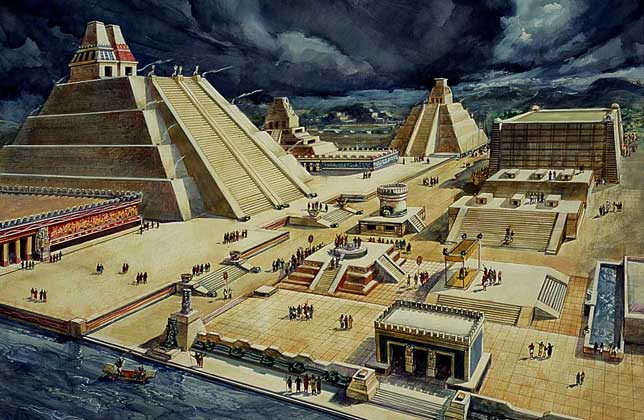
After Independence
When the Independence movement of Mexico started in 1810, mining projects were negatively affected and had to be stopped. It was not until 1823 when the movement ended that mining activity was restarted. Remember that I mentioned my surname Straffon being from Cornwall, England? Well, it was precisely during these years that the British Real del Monte Company was established thanks to English capital. This company provided both technology and workforce, some of it straight from Cornwall to re-establish silver mines located in Real del Monte, Hidalgo. 1,500 tons of equipment including 9 steam engines with their large boilers, 5 for pumping, 2 for crushing ore and 2 for use in powering saw mills; various pumps; large cast iron pipes to connect the pumps to be placed at the bottom of the mines with the surface. And so started the rebuilding and modernization of the district’s mining industry. The Cornish miners had brought the Industrial Revolution to Mexico.
By the beginning of the 20th century, Mexico was entering a major political transformation as new laws and codes were created. During Porfirio Diaz’ administration, for example, most of the railroad infrastructure was built all through the country, focusing on the main mining centers that were already established. Then the American corporations showed up offering the means for better extraction as mines during the times of Nueva España were certainly used, but could not be exploited to their maximum because Spain lacked the technology and resources to do so.
The Fresnillo Company, Mazapil Cooper Co., Peñoles Mining Co., and Pittsburg & Mexico Tin Mining Co. were some of the companies looking to make a profit out of Mexico’s mines. Parallel industries started to rise, the economy diversified and the country’s elite dreamed of Mexico being on its way to becoming a world economy. Metallurgical processes were improved with maximum return on capital and mineral processing efficiency as the main goal. The bonanza would cease somewhat in the 1960s when the mining industry was nationalized and mine administration passed to the charge of Mexican professionals.
Then came NAFTA, and in 1992 mining laws were modified substantially in order to accommodate the demands of big national and transnational corporations. Compared to the prior 300 years, production of gold and silver doubled even though several communities resisted the exploitation. Social and environmental damage increased substantially as a consequence due to legal impunity and the ability of the mining organizations to trample over human rights. The Mexican Mining Law of 1992 is a unique and unconstitutional piece of legislation, and rides roughshod over earlier laws which allowed for judicial challenges and which consequently made it difficult for companies to carry on their business with impunity. The solution of the mining organizations was, of course, to create a whole web of corruption that extends to the three branches of government. We are still living the influence of NAFTA until this very day. Business as usual.
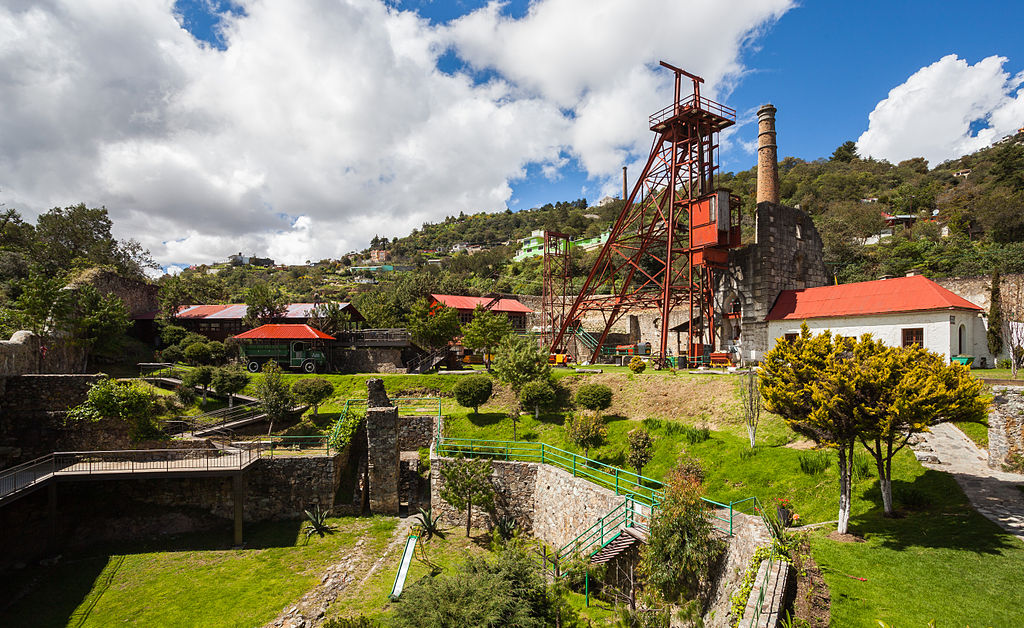
Keep on Digging
Doctor María Teresa Sánchez Salazar has set out very interesting mine “conflict maps” which consider many parameters including land conflict, environmental conflict, social conflict, labor conflict or a combination of those factors. Data shows that 75% of these conflicts have to do with land, that is, land grabs by the mining companies or due to environmental conflicts, and almost 70% of them happen in open-pit mines. Another interesting number – 60% of the conflicts have involved foreign company owned mines.
She adds that there are places where conflict started due to land grab and the subsequent leasing to mining companies and the implementation of ways to displace people from their native lands. Of a total of 181 natural areas, 57 have been leased for mining. Eight of them focus more than 75% of the surface to this activity. Twenty of them have at least 93% of their surface leased. One example is the Rayón National Park in Michoacan, its land is practically 100% leased for mining as well as Huautla Mountain Range that is between Morelos, Puebla and Guerrero.
Safety is also an issue for the Mexican mining sector. There are powerful cartels that have quite an influence in the entire country, including mining states such as Sonora, Chihuahua, Sinaloa and Guerrero. Mines have been object of many armed robberies that have increased during the COVID-19 pandemic. Extortion, threats and employee kidnapping have been the most common crimes reported by the mining companies.
If this was a Robin Hood kind of deal then I should certainly support it, but in the end workers are the most affected, operations are seldom slowed down and the exploitation just does not stop. If the criminal gangs were to take over, not much would change as, let’s be honest, both companies and cartels pretty much operate the same way but at a different scale.
Bacadéhuachi
In times prior to the year 1600, this area was inhabited by Opata indigenous settlements. In the year 1645 a mission named San Luis Gonzága de Bacadéhuachi was founded by the Jesuit missionary Cristóbal García. Its current inhabitants dedicate their lives to taking care of livestock and making cheese, bread and tortillas which are sold among themselves; within the world economy, they don’t have much of a choice. Being only 270 kilometers away from Hermosillo, capital of the State of Sonora, the road takes 5 hours to transit due to the uneven and complex terrain that in turn makes it a dangerous travel.
This town is on the same route of the high mountain range that takes you to Chihuahua, its neighbor state. This is a high-risk road as armed conflicts are constantly raging between groups that are looking to take control of this area. Some months ago, armed men went into the municipality creating such a situation and ending the peaceful environment to the point that the Mexican National Guard and the State Police now have to be constantly present.
Bacadehuachi has around 500 houses, most of them made of adobe, occupied by around 1,083 people according to the The National Institute of Statistics and Geography (INEGI). It has cobblestone roads and few are made of concrete due to the minimal vehicle transit. It is more common to see people on horses or donkeys than in motor vehicles. Everything is around the corner, there are no gas stations nearby. It has 3 municipal police officers that issue around 10 different fines a year. There is only one health center for basic checkups and a doctor is available every 3 days.
Regarding education, only one preschool, one primary school and one secondary school exist. For those who want to receive higher education, their only choice is to go to Granados, a municipality 50 kilometers away from the town. The road is risky to say the least, young students must stay at the neighboring town and go back to their families at the weekends in a municipality sponsored bus. To go to college is a victory, a luxury, a rare occurrence for the townspeople.
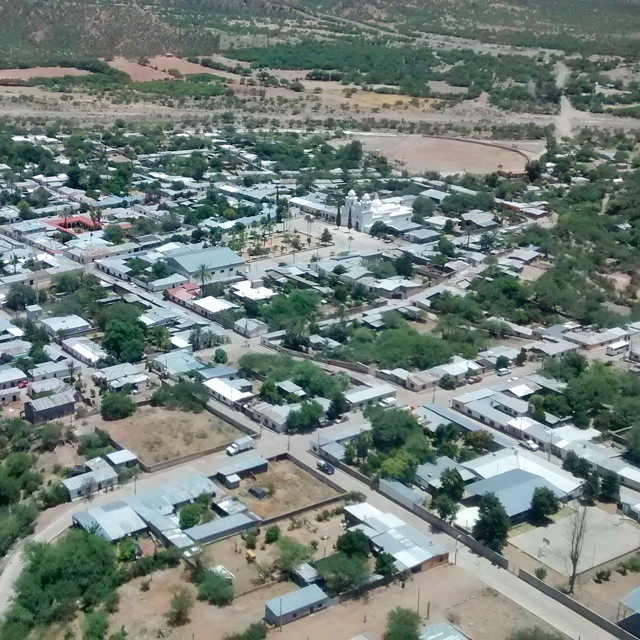
Don’t Know What I’m Selling
Miguel Teran is a farmer and former owner of La Ventana ranch. He sold his land to Bacanora Lithium for the Sonora Lithium Project. He asserts that the first explorations started back in 1994. Geologists came to the La Ventana ranch in government cars. They took some soil samples, came back 8 years later, measured the land and after that they never came back. Ten years ago, Bacanora Lithium carried out some studies. They drilled around 115 holes with the permission of Miguel and then they offered to buy the land.
I told them: you know what you’re buying, but I don’t know what I’m selling. Don’t take advantage of me. That’s how the negotiation started, but they wanted to pay as if it was a mere piece of land.”
Miguel wasn’t disappointed yet he acknowledges that he could have made a better deal as he has since found out what treasure lies in the 1,900 hectares that were sold and integrated into the Sonora Lithium Project. For the time being and until the mineral is extracted, Miguel may allow his cows to graze there as stipulated in the contract.
I am within my rights until I get in the way, but I have already bought some land.” Finally, he adds, “sometimes my car battery would fail and they would tell me that I had lithium here, but I only know about horses and chickens; not lithium.”

The Trauma of Our Technological Selves
As a city-dweller, my experience with Nature has been for the most part parks and decorative gardens. Since I live so disconnected from the land itself, I can only enter into relationship with my own species, our creations and the animals we call pets. For a long time I’ve been scared of insects and even though working in a garden has helped diminish the feeling, I still feel uncomfortable in certain scenarios. Soil and its minerals are even weirder to me, because I had never considered them something other than a resource, a component that can be used for my benefit through technology. They don’t seem alive, they don’t seem to have any other purpose than sitting there for us to transform them into something else.
Perhaps my biggest realization during my journey to connect with the land is the enormous damage that Capitalism, Colonialism and Industrialism have inflicted on the planet. It has reached the point that we are also physically, psychologically, emotionally and spiritually bent and broken enough for us to barely notice the indifference and violence around us. Indifference and violence done to each other and to ourselves. And yet, those who notice don’t always take action. Even less, those who know and take action don’t have a clear idea, much less a strategy to stop the abuse.
This is not something that modern technology can fix. Not the electric cars, not the solar cells nor the electric batteries. Not the tote bags and the bamboo toothbrushes that you can use as compost. Our home is being gutted and we just stand there watching, unsure on what to do. When you actually want to stop a killer, you go ahead and do it. You don’t offer knives from recycled metal or whips made out of hemp. You go ahead and put an end to the abuse by neutralizing any capacity to inflict damage that the perpetrator might have. You stop the killing, you stop the behavior, you commit yourself to do so.
Today I read that only 3% of world’s ecosystems remain intact. Civilization is going down regardless of what we do. Nothing can grow indefinitely without collapsing. The real question is what will be left when our civilization goes down. Our struggle resides in stopping it before there is nothing left.
Cristopher Straffon Marquez a.k.a. Straquez is a theater actor and language teacher currently residing in Tijuana, Baja California, Mexico. Artist by chance and educator by conviction, Straquez was part of the Zeitgeist Movement and Occupy Tijuana Movement growing disappointed by good intentions misled through dubious actions. He then focused on his art and craft as well as briefly participating with The Living Theatre until he stumbled upon Derrick Jensen’s Endgame and consequently with the Deep Green Resistance: Strategy to Save the Planet both changing his mind, heart and soul. Since then, reconnecting with the land, decolonizing the mind and fighting for a living planet have become his goals.
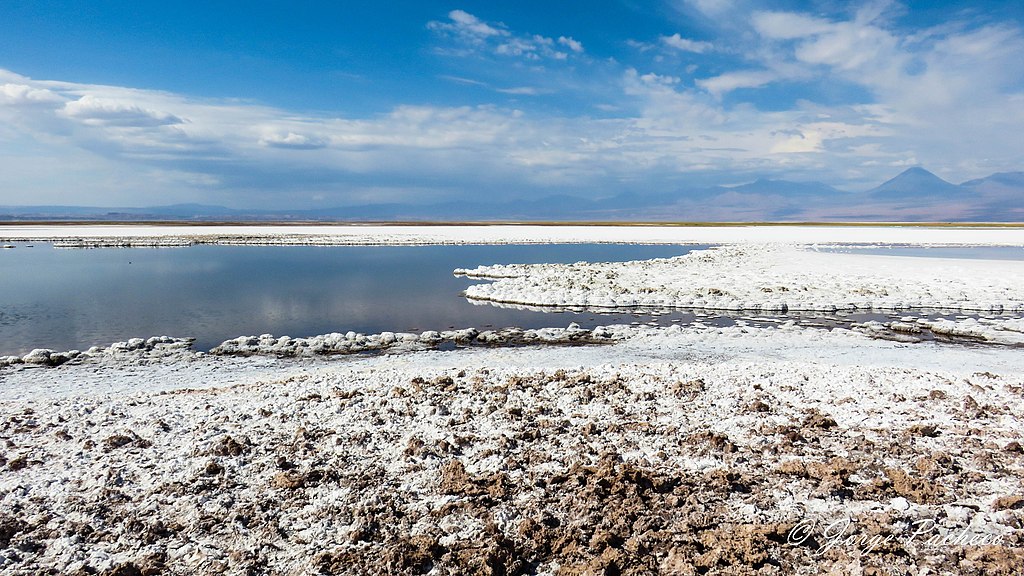
by DGR News Service | May 8, 2021 | Biodiversity & Habitat Destruction, Colonialism & Conquest, Education, Mining & Drilling, Strategy & Analysis, Toxification
By Straquez
Mine is the Ignorance of the Many
I was born in Mexico City surrounded by big buildings, a lot of cars and one of the most contaminated environments in the world. When I was 9 years old my family moved to Tijuana in North West Mexico and from this vantage point, on the wrong side of the most famous border town in the world, I became acquainted with American culture. I grew up under the American way of life, meaning in a third-world city ridden with poverty, corruption, drug trafficking, prostitution, industry and an immense hate for foreigners from the South.
Through my school years, I probably heard a couple of times how minerals are acquired and how mining has brought “prosperity” and “progress” to humanity. I mean, even my family name comes from Cornwall, known for its mining sites. The first Straffon to arrive from England to Mexico did so around 1826 in Real del Monte in the State of Hidalgo (another mining town!). However, it is only recently, since I have started following the wonderful work being done in Thacker Pass by Max Wilbert and Will Falk that the horrors of mining came into focus and perspective.
What is mining? You smash a hole in the ground, go down the hole and smash some more then collect the rocks that have been exposed and process them to make jewelry, medicines or technology. Sounds harmless enough. It’s underground and provides work and stuff we need, right? What ill could come out of it? After doing some digging (excuse the pun), I feel ashamed of my terrible ignorance. Mine is the ignorance of the many. This ignorance is more easily perpetuated in a city where all the vile actions are done just so we can have our precious electronics, vehicles and luxuries.
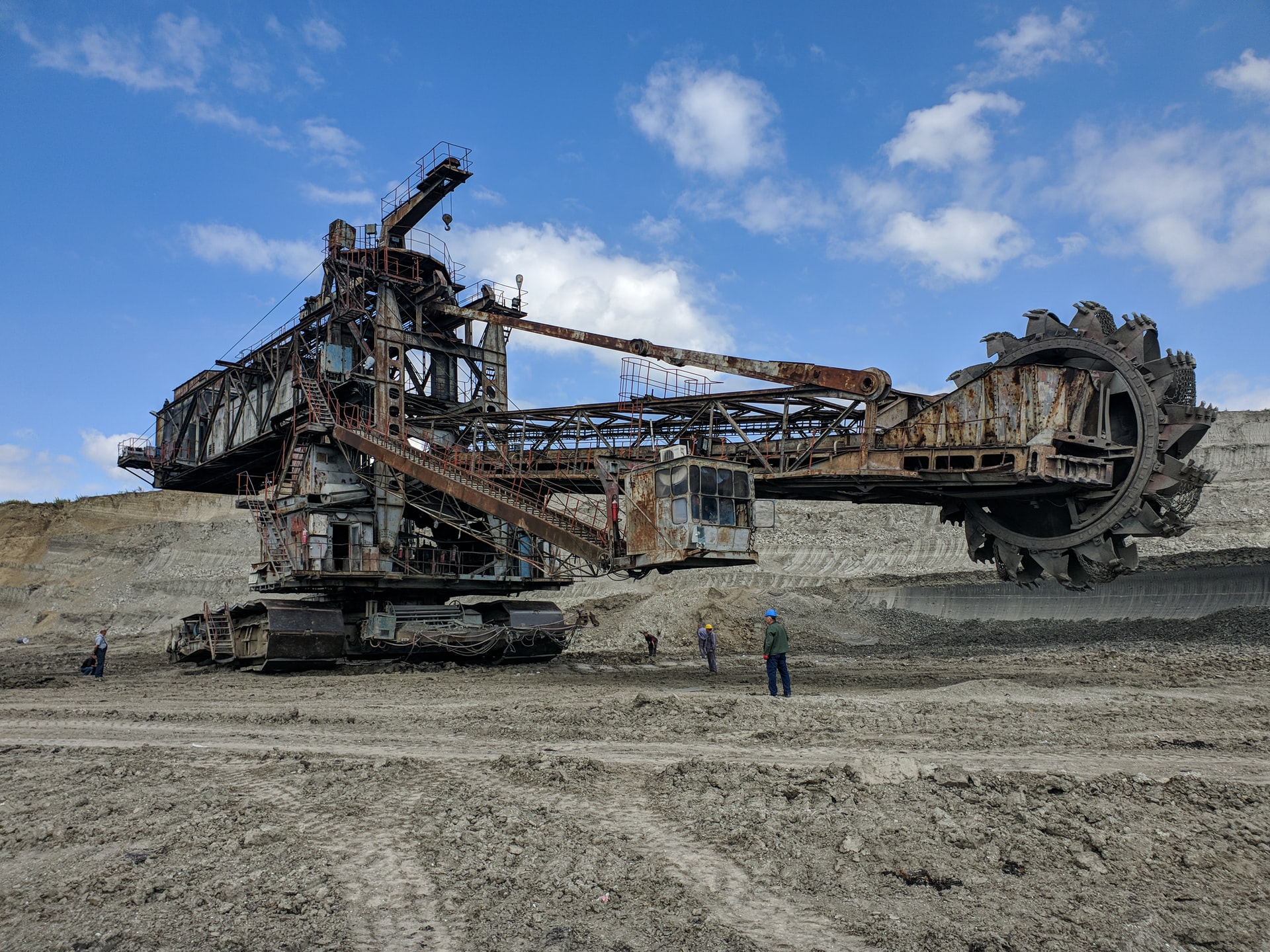
Mine Inc.
Mining, simply put, is the extraction of minerals, metals or other geological materials from earth including the oceans. Mining is required to obtain any material that cannot be grown or artificially created in a laboratory or factory through agricultural processes. These materials are usually found in deposits of ore, lode, vein, seam, reef or placer mining which is usually done in river beds or on beaches with the goal of separating precious metals out of the sand. Ores extracted through mining include metals, coal, oil shale, gemstones, calcareous stone, chalk, rock salt, potash, gravel, and clay. Mining in a wider sense means extraction of any resource such as petroleum, natural gas, or even water.
Mining is one of the most destructive practices done to the environment as well as one of the main causes of deforestation. In order to mine, the land has to be cleared of trees, vegetation and in consequence all living organisms that depend on them to survive are either displaced or killed. Once the ground is completely bare, bulldozers and excavators are used to smash the integrity of the land and soil to extract the metals and minerals.
Mining comes in different forms such as open-pit mining. Like the name suggests, is a type of mining operation that involves the digging of an open pit as a means of gaining access to a desired material. This is a type of surface mining that involves the extraction of minerals and other materials that are conveniently located in close proximity to the surface of the mining site. An open pit mine is typically excavated with a series of benches to reach greater depths.
Open-pit mining initially involves the removal of soil and rock on top of the ore via drilling or blasting, which is put aside for future reclamation purposes after the useful content of the mine has been extracted. The resulting broken up rock materials are removed with front-end loaders and loaded onto dump trucks, which then transport the ore to a milling facility. The landscape itself becomes something out of a gnarly science-fiction movie.
Once extracted, the components are separated by using chemicals like mercury, methyl-mercury and cyanide which of course are toxic to say the least. These chemicals are often discharged into the closest water sources available –streams, rivers, bays and the seas. Of course, this causes severe contamination that in turn affects all the living organisms that inhabit these bodies of water. As much as we like to distinguish ourselves from our wild kin this too affects us tremendously, specially people who depend on the fish as their staple food or as a livelihood.
One of the chemical elements that is so in demand in our current economy is Lithium. Lithium battery production today accounts for about 40% of lithium mining and 25% of cobalt mining. In an all-battery future, global mining would have to expand by more than 200% for copper, by a minimum of 500% for lithium, graphite, and rare earths, and far more for cobalt.

Lithium – Isn’t that a Nirvana song?
Lithium is the lightest metal known and it is used in the manufacture of aircraft, nuclear industry and batteries for computers, cellphones, electric cars, energy storage and even pottery. It also can level your mood in the form of lithium carbonate. It has medical uses and helps in stabilizing excessive mood swings and is thus used as a treatment of bipolar disorder. Between 2014 and 2018, lithium prices skyrocketed 156% . From 6,689 dollars per ton to a historic high of 17,000 dollars in 2018. Although the market has been impacted due to the on-going pandemic, the price of lithium is also rising rapidly with spodumene (lithium ore) at $600 a ton, up 40% on last year’s average price and said by Goldman Sachs to be heading for $676/t next year and then up to $707/t in 2023.
Lithium hydroxide, one of the chemical forms of the metal preferred by battery makers, is trading around $11,250/t, up 13% on last year’s average of $9978/t but said by Goldman Sachs to be heading for $12,274 by the end of the year and then up to $15,000/t in 2023. Lithium is one of the most wanted materials for the electric vehicle industry along cobalt and nickel. Demand will only keep increasing if battery prices can be maintained at a low price.
Simply look at Tesla’s gigafactory in the Nevada desert which produces 13 million individual cells per day. A typical Electronic Vehicle battery cell has perhaps a couple of grams of lithium in it. That’s about one-half teaspoon of sugar. A typical EV can have about 5,000 battery cells. Building from there, a single EV has roughly 10 kilograms—or 22 pounds—of lithium in it. A ton of lithium metal is enough to build about 90 electric cars. When all is said and done, building a million cars requires about 60,000 tons of lithium carbonate equivalent (LCE). Hitting 30% penetration is roughly 30 million cars, works out to about 1.8 million tons of LCE, or 5 times the size of the total lithium mining industry in 2019.
Considering that The United States-Mexico-Canada Agreement (USMCA) is being negotiated, lithium exploitation is a priority as a “must be secured” supply chain resource for the North American corporate machine. In 3 years, cars fabricated in these three countries must have at least 75% of its components produced in the North American region so they can be duty-free. This includes the production of lithium batteries that could also become a profitable business in Mexico.
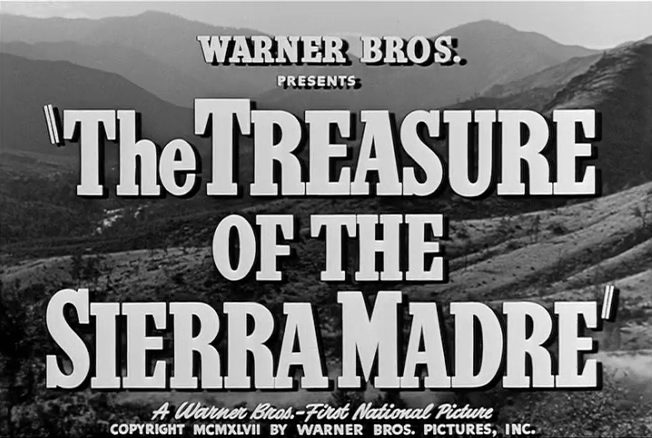
Sonora on Lithium
In the mythical Sierra Madre Occidental (“Western Mother” Mountain Range) which extends South of the United States, there is a small town known as Bacadéhuachi. This town is approximately 11 km away from one of the biggest lithium deposits in the world known as La Ventana. At the end of 2019, the Mexican Government confirmed the existence of such a deposit and announced that a concession was already granted on a joint venture project between Bacanora Minerals (a Canadian company) and Gangfeng Lithium (a Chinese company) to extract the coveted mineral. The news spread and lots of media outlets and politicians started to refer to lithium as “the oil of the future.”
I quote directly the from Bacanora Lithium website:
Sonora Lithium Ltd (“SLL”) is the operational holding company for the Sonora Lithium Project and owns 100% of the La Ventana concession. The La Ventana concession accounts for 88% of the mined ore feed in the Sonora Feasibility Study which covers the initial 19 years of the project mine life. SLL is owned 77.5% by Bacanora and 22.5% by Ganfeng Lithium Ltd.
Sonora holds one of the world’s largest lithium resources and benefits from being both high grade and scalable. The polylithionite mineralisation is hosted within shallow dipping sequences, outcropping on surface. A Mineral Resource estimate was prepared by SRK Consulting (UK) Limited (‘SRK’) in accordance with NI 43-101.”
The Sonora Lithium Project is being developed as an open-pit strip mine with operation planned in two stages. Stage 1 will last for four years with an annual production capacity of approximately 17,500t of lithium carbonate, while stage 2 will ramp up the production to 35,000 tonnes per annum (tpa). The mining project is also designed to produce up to 28,800 tpa of potassium sulfate (K2SO4), for sale to the fertilizer industry.
On September 1st, 2020, Mexico’s President, Andres Manuel Lopez Obrador, dissolved the Under-secretariat of Mining as part of his administration’s austerity measures. This is a red flag to environmental protection as it creates a judicial void which foreign companies will use to allow them greater freedom to exploit more and safeguard less as part of their mining concession agreements.
Without a sub-secretariat, mediation between companies, communities and environmental regulations is virtually non-existent. Even though exploitation of this particular deposit had been adjudicated a decade ago under Felipe Calderon’s administration, the Mexican state is since then limited to monitoring this project. This lack of regulatory enforcement will catch the attention of investors and politicians who will use the situation to create a brighter, more profitable future for themselves and their stakeholders.
To my mind there is a bigger question – how will Mexico benefit from having one of the biggest deposits of lithium in the world? Taking into account the dissolution of the Mining sub-secretariat and the way business and politics are usually handled in Mexico, I do wonder who will be the real beneficiaries of the aforementioned project.
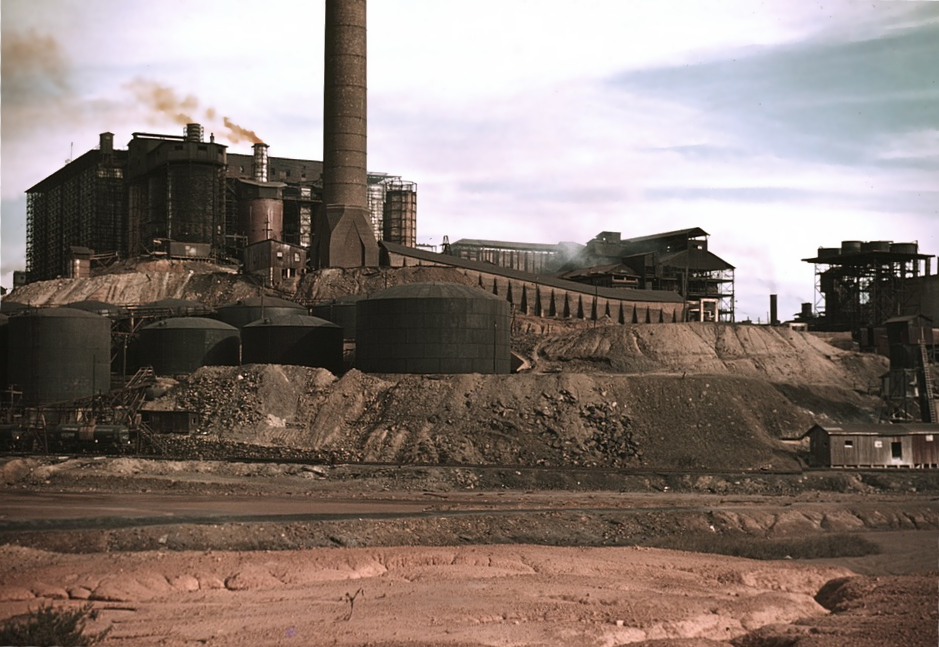
Extra Activism
Do not forget, mining is an integral part of our capitalist economy; mining is a money making business – both in itself and as a supplier of materials to power our industrial civilization. Minerals and metals are very valuable commodities. Not only do the stakeholders of mining companies make money, but governments also make money from revenues.
There was a spillage in the Sonora river in 2014. It affected over 22,000 people as 40 million liters of copper sulfate were poured into its waters by the Grupo Mexico mining group. Why did this happen? Mining companies are run for the profit of its stakeholder and it was more profitable to dump poison into the river than to find a way to dispose it with a lower environmental impact. Happily for the company stakeholders, company profit was not affected in the least.
Even though the federal Health Secretariat in conjunction with Grupo México announced in 2015 the construction of a 279-million-peso (US $15.6-million) medical clinic and environmental monitoring facility to be known as the Epidemiological and Environmental Vigilance Unit (Uveas) to treat and monitor victims of the contamination, until this day it has not been completed. The government turned a blind eye to the incident after claiming they would help. All the living beings near the river are still suffering the consequences.
Mining is mass extraction and this takes us to the practice of “extractivism” which is the destruction of living communities (now called “resources”) to produce stuff to sell on the world market – converting the living into the dead. While it does include mining – extraction of fossil fuels and minerals below the ground, extractivism goes beyond that and includes fracking, deforestation, agro-industry and megadams.
If you look at history, these practices have deeply affected the communities that have been unlucky enough to experience them, especially indigenous communities, to the advantage of the so-called rich. Extractivism is connected to colonialism and neo-colonialism; just look at the list of mining companies that are from other countries – historically companies are from the Global North. Regardless of their origins, it always ends the same, the rich colonizing the land of the poor. Indigenous communities are disproportionately targeted for extractivism as the minerals are conveniently placed under their land.
While companies may seek the state’s permission, even work with them to share the profits, they often do not obtain informed consent from communities before they begin extracting – moreover stealing – their “resources”. The profit made rarely gets to the affected communities whose land, water sources and labor is often being used. As an example of all of this, we have the In Defense of the Mountain Range movement in Coatepec, Veracruz. Communities are often displaced, left with physical, mental and spiritual ill health, and often experience difficulties continuing with traditional livelihoods of farming and fishing due to the destruction or contamination of the environment.
Cristopher Straffon Marquez a.k.a. Straquez is a theater actor and language teacher currently residing in Tijuana, Baja California, Mexico. Artist by chance and educator by conviction, Straquez was part of the Zeitgeist Movement and Occupy Tijuana Movement growing disappointed by good intentions misled through dubious actions. He then focused on his art and craft as well as briefly participating with The Living Theatre until he stumbled upon Derrick Jensen’s Endgame and consequently with the Deep Green Resistance: Strategy to Save the Planet both changing his mind, heart and soul. Since then, reconnecting with the land, decolonizing the mind and fighting for a living planet have become his goals.
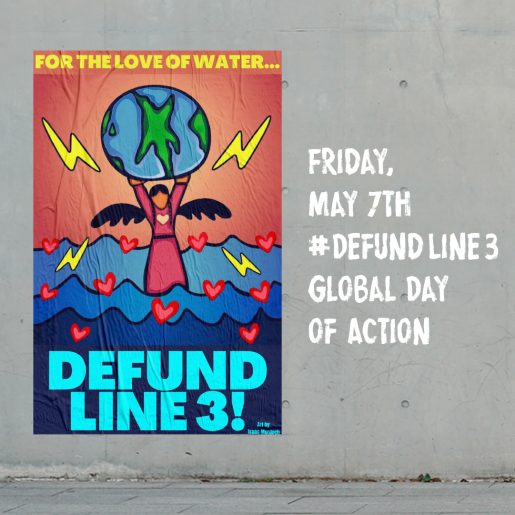
by DGR News Service | May 7, 2021 | Biodiversity & Habitat Destruction, Colonialism & Conquest, Direct Action, Indigenous Autonomy, Mining & Drilling, Movement Building & Support, Noncooperation, Protests & Symbolic Acts, Repression at Home, Toxification, White Supremacy
Original Press Release
Relatives,
Together we are powerful. Since the #DefundLine3 campaign launched in February, bank executives have received more than 700,000 emails, 7,000 calendar invites and 3,000 phone calls, demanding that they stop funding Line 3. There have been protests at bank branches in 16 states. Collectively, we’ve raised more than $70,000 for those on the frontlines.
Now, we’re pulling all of that energy together for one powerful, coordinated day of action.
There are already actions confirmed in more than 40 US cities ― in New York, DC, San Francisco, Chicago, Boston and more ― as well as in the UK, France, Holland, Switzerland, Costa Rica, Canada and Sierra Leone.
If there isn’t an action near you, organize one! Actions can be small. Going to a local bank branch with your friend to deliver a letter or petition can be a powerful action. Actions can be large. Think hundreds of people shutting down the streets outside of a bank’s headquarters.
On the frontlines, more than 240 people have now been arrested for taking bold direct action to stop the construction of Line 3.
Just a few weeks ago, Indigenous Water Protectors sang and prayed inside of a waaginogaaning, the traditional structure of Anishinaabe peoples, as allies locked to each other around the lodge, blocking Line 3 construction for hours.
After they were arrested, the Indigenous Water Protectors were strip-searched, shackled and kenneled ― for nonviolent misdemeanors. Meanwhile, Enbridge has spent hundreds of thousands of dollars on riot gear, tear gas, and weapons for local militarized police forces that are regularly surveilling and harrassing nonviolent Water Protectors.
-Simone Senogles
P.S. Want to learn more about the #DefundLine3 campaign? Check out
this blog or
this blog from Tara Houska, founder of the Giniw Collective.


![“May the truth be your armor” [Excerpts from Bright Green Lies]](https://dgrnewsservice.org/wp-content/uploads/sites/18/2021/05/BGL.jpeg)












